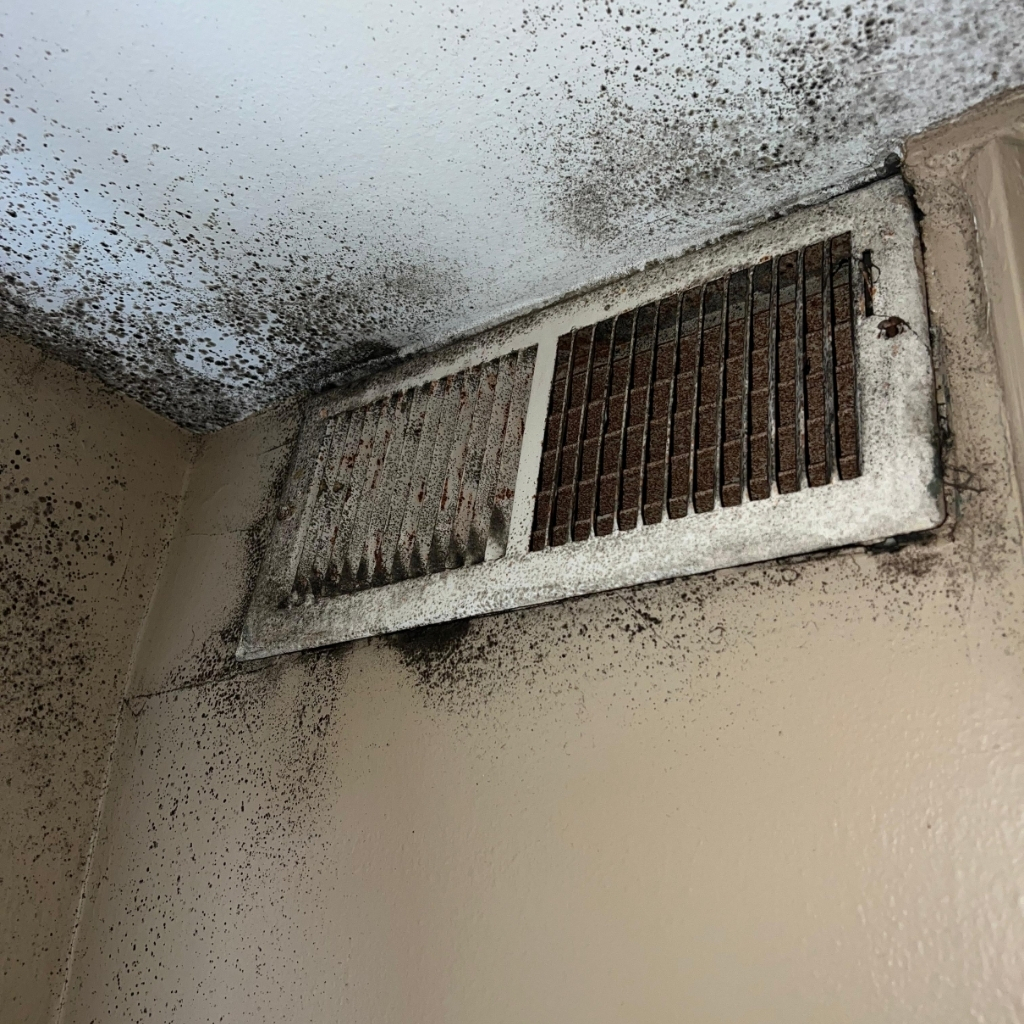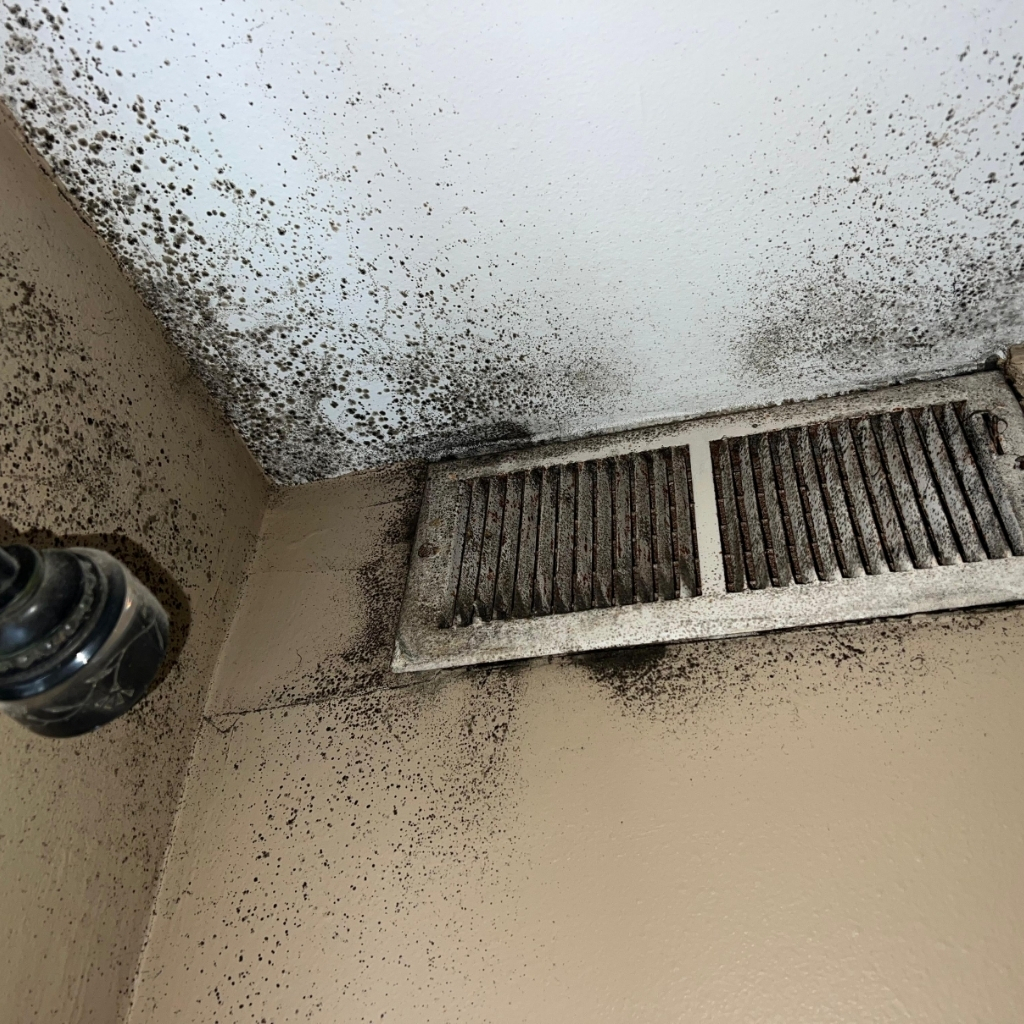Warning: Signs of Black Mold in Air Ducts and Why It’s Dangerous
Imagine waking up with unexplained allergy symptoms, constant fatigue, or a persistent musty smell lingering in your home. The culprit might be hiding in plain sight—black mold in your air ducts. This hidden danger doesn’t just compromise the air you breathe; it poses a severe health risk to you and your family. Left untreated, black mold can spread throughout your home, impacting your health, increasing energy costs, and causing structural damage.
This guide will help you understand how to spot the signs of black mold in air ducts, why it’s dangerous, and how to remove and prevent it effectively.

What Is Black Mold and Why Is It Dangerous?
Understanding Black Mold
Black mold, scientifically known as Stachybotrys chartarum, is a toxic mold species commonly found in damp or humid environments. It is most recognizable by its dark green or black appearance and slimy texture. This type of mold is particularly harmful because it produces mycotoxins—compounds that can cause significant health issues when inhaled, touched, or even indirectly absorbed through contaminated surfaces. Unlike other types of mold, black mold thrives in conditions where there is consistent moisture, making your air ducts an ideal environment for its growth.
When black mold in air ducts is left untreated, it doesn’t just stay confined—it spreads throughout your home, contaminating the air and creating a cycle of exposure that can be hard to break without professional intervention. Knowing how to identify and address black mold in air ducts is crucial to ensuring a healthy living environment.
Health Risks of Black Mold Exposure
The dangers of black mold in air ducts are not limited to minor irritations. The effects can escalate significantly depending on the length and level of exposure. Key health risks include:
- Respiratory Issues: Prolonged exposure to black mold spores can trigger chronic coughing, wheezing, shortness of breath, and a tight feeling in the chest. For individuals with pre-existing respiratory conditions, the impact is often more severe.
- Allergic Reactions: Symptoms such as frequent sneezing, watery or itchy eyes, skin rashes, and runny noses can indicate an allergic response to mold spores circulating through your HVAC system.
- Chronic Illnesses: Long-term exposure to black mold in air ducts has been linked to complications such as chronic bronchitis, recurring sinus infections, and, in extreme cases, fungal infections in the lungs.
- Vulnerable Groups: Children, seniors, and individuals with weakened immune systems are particularly susceptible to the harmful effects of black mold. For these groups, even minimal exposure can lead to significant health challenges.
Why Black Mold Thrives in Air Ducts
Your air ducts can provide the perfect environment for black mold to grow and spread due to a combination of moisture, organic material, and stagnant air. Here’s why:
- Moisture: Condensation is a common occurrence in air ducts, particularly when warm air meets the cool surfaces of duct walls. This damp environment is an ideal breeding ground for black mold.
- Dust and Debris: Dust, dirt, and other organic particles naturally accumulate in your ductwork over time. These materials serve as a food source for mold spores, enabling them to thrive and multiply.
- Stagnant Air: Poor ventilation or improperly balanced airflow can lead to stagnant air within your ductwork. Without proper circulation, mold spores settle and grow, eventually spreading throughout your HVAC system.
- Leaky Ducts: Cracks or gaps in ductwork allow additional moisture and contaminants to enter, further exacerbating the conditions for mold growth. Leaky ducts also compromise the efficiency of your HVAC system, creating a dual problem of poor air quality and higher energy costs.
Understanding these factors is essential in preventing and addressing black mold in air ducts before it becomes a widespread issue.
Visible Signs
One of the easiest ways to detect black mold is through visual inspection. Common signs include:
- Black or dark green patches near vent openings.
- Slimy or fuzzy mold growth inside ductwork or on HVAC components.
Odor Indicators
Even if you don’t see mold, you might smell it:
- A persistent musty, earthy odor that worsens when your HVAC system is running.
- Localized smells near specific vents or rooms.
Health Symptoms Linked to Black Mold
The health of your household may provide additional clues:
- Chronic coughing, sneezing, or difficulty breathing indoors.
- Frequent sinus infections, fatigue, or headaches.
- Increased allergy or asthma symptoms.
HVAC Performance Issues
Mold can also affect how efficiently your HVAC system operates:
- Reduced airflow due to mold obstructions.
- Inconsistent temperatures or increased energy bills.
How to Confirm Black Mold in Air Ducts
DIY Inspection
If you suspect mold, start with a basic inspection:
- Remove vent covers and inspect the duct interiors with a flashlight.
- Look for dark, slimy patches or discoloration on the duct walls.
- Check for signs of moisture or condensation.
Professional Mold Testing
For more accurate results, consider professional testing:
- Certified technicians use specialized tools like air quality meters and moisture detectors to identify hidden mold.
- Lab analysis of collected samples can confirm whether the mold is toxic.
Dangers of Ignoring Black Mold in Air Ducts
Health Risks
Prolonged exposure to black mold can lead to:
- Worsening asthma or bronchitis symptoms.
- Development of chronic respiratory conditions.
- Neurological issues like headaches, memory loss, and mood swings.
Home Damage
Mold can spread beyond your air ducts, affecting:
- Walls, ceilings, and furniture, causing discoloration and structural damage.
- Expensive repairs if mold infiltrates deeply into your home.
Energy Inefficiency
- Mold buildup obstructs airflow, forcing your HVAC system to work harder.
- Higher energy bills and increased wear-and-tear on your system.
How to Remove Black Mold from Air Ducts
DIY Mold Removal Tips
For small mold patches, you can try:
- Cleaning Solution: Use a mixture of water and mild detergent to scrub mold spots.
- Protective Gear: Always wear gloves, a mask, and goggles to avoid exposure.
- Avoid Bleach: While bleach can kill mold, it may damage duct materials and release harmful fumes.
Professional Mold Remediation
For extensive mold infestations, professional help is a must:
- Specialized Tools: Professionals use HEPA vacuums, sanitizers, and negative air machines to remove mold safely.
- Expertise: Mold remediation teams ensure complete mold removal and prevent future growth.
- Trusted Providers: AirDuctVet Cleaning Services specializes in black mold removal using advanced cleaning techniques to restore your air ducts.

How to Prevent Black Mold in Air Ducts
Improve Ventilation
Proper ventilation reduces moisture and prevents mold growth:
- Open windows regularly to increase airflow.
- Use exhaust fans in kitchens and bathrooms to control humidity.
Control Humidity Levels
- Maintain indoor humidity levels between 30% and 50%.
- Use a dehumidifier in damp areas or during humid seasons.
Regular HVAC Maintenance
- Replace filters every 1–3 months to prevent dust accumulation.
- Schedule annual HVAC inspections to detect issues early.
Clean Ducts Regularly
- Dust and debris in ducts provide a breeding ground for mold.
- Schedule professional air duct cleaning with AirDuctVet Cleaning Services to ensure thorough cleaning and mold prevention.
FAQ About Black Mold in Air Ducts
1. How can I tell if there’s black mold in my air ducts?
Look for visible mold patches, musty odors, and recurring respiratory issues in your household.
2. Can black mold spread through air ducts?
Yes, mold spores can travel through the HVAC system, contaminating other areas of your home.
3. How much does it cost to remove black mold from air ducts?
The cost typically ranges from $500–$1,500, depending on the severity of the infestation and ductwork size.
4. How can I prevent black mold from returning?
Control indoor humidity, improve ventilation, and schedule regular professional air duct cleanings.

Why Choose AirDuctVet Cleaning Services?
Your home deserves clean air, and AirDuctVet Cleaning Services delivers:
- Expert Mold Removal: Our technicians are trained to identify and eliminate black mold safely and effectively.
- Advanced Techniques: We use cutting-edge tools to clean and sanitize your ducts, preventing mold recurrence.
- Guaranteed Satisfaction: Enjoy peace of mind knowing your home’s air quality is in trusted hands.
Conclusion
Black mold in air ducts is a silent threat that can harm your health and home. By understanding the signs, taking preventative measures, and addressing mold issues promptly, you can ensure cleaner, safer air for your family.
Take Action Today
Don’t wait for black mold to spread. Contact AirDuctVet Cleaning Services now for professional air duct cleaning and mold removal. Call today for a free consultation and breathe easier knowing your home is mold-free!
